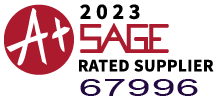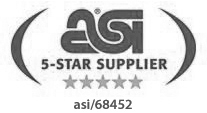How To Effectively Use Promotional Products
One of the most tried and true tools of marketing and advertising is the use of promotional products. From inexpensive pens to t-shirts, promotional products are a great way to get your name into the hands of potential customers. When planning your approach to promotional marketing, it is important to develop a marketing strategy to correctly utilize promotional products and maximize results. Choosing a Promotional Products DistributorBefore choosing a promotional product, first you need to choose a distributor. With hundreds of distributors to choose from, it’s important to identify the right fit for your needs. One of the most important things to remember is to avoid companies that just want to push you a promotional product. Commissioned sales representatives are often simply out to make a sale – your purchase equals their paycheck! When you purchase promotional products from a promotional company that uses a team approach, you’ll find they are more interested in helping you find the promotional product that truly fits your needs, not just the promotional product that will give them higher commission checks.After choosing your distributor, make sure that they understand your brand and needs. Don’t be afraid to tell them exactly what you’re looking for or to ask for help. A good promotional product specialist is never afraid to research promotional products and ideas to find the right fit for your needs. From brainstorming to price negotiations, a dedicated account management team is your best source for finding unique promotional products at the best price.Developing a Long-Term Strategy for Use of Promotional ProductsYou should always keep in mind that the use of promotional products is most beneficial when paired with a long-term promotional marketing strategy. Although you may only use a promotional product once, when that product is paired with subsequent marketing efforts and future promotions, you leave a longer-lasting impression on your clients. When designing your promotional marketing strategy, first look at your brand and corporate image. Which promotional products are most appropriate to convey your identity? Is there a certain image or feel you want to present to the recipients of your promotional product? This is a great time to address your specific needs and plans with your account team. With access to a nearly unlimited number of promotional products, they can help you choose the perfect promotional product for your needs. Identifying Your Target DemographicNext you will need to identify your target audience and demographics. It’s important to evaluate who the recipients of your promotional product will be. For example, at a celebration of Dr. Martin Luther King Jr., Georgia State University needed to develop a full marketing strategy for the week-long festivities. They needed banners, print collateral and promotional products to distribute to students. To fit their target demographic, their marketing campaign included imprinted GumPaks™, molded chocolates and print collateral to distribute around campus. Georgia State’s end decision to choose candy for their promotional products was perfect for their target demographic of students. By analyzing your end recipients and finding a promotional product that will be useful to them, you maximize exposure of your brand and corporate initiatives.Usage of Your Promotional ProductLastly, what do you plan to use your promotional products for? The individual promotional product you choose should be based on the several factors already discussed along with the type of event or promotion. The event will almost always determine your budget and type of promotional product. A promotional product for a tradeshow is usually something that draws attention to your booth, thereby drawing attention to your name and services. Using a fun, eye-catching promotional product such as a light-up yo-yo will be entertaining for recipients, and the promotional product will likely stay in their possession for months to come. While a yo-yo might work great for a tradeshow, a more upscale promotional product would be better for a potential million-dollar client. A leather brief bag, digital photo frame or large holiday gift basket would be a more appropriate promotional product for a client at that level. Your choice of promotional product will vary greatly depending on the situation and your target audience.Developing a strategy to effectively utilize your promotional products is the best way to maximize your return. Promotional products are a budget friendly way to get thousands of advertising exposures. By following these tips when developing your strategy, you will effectively use your promotional products to grow your brand.










